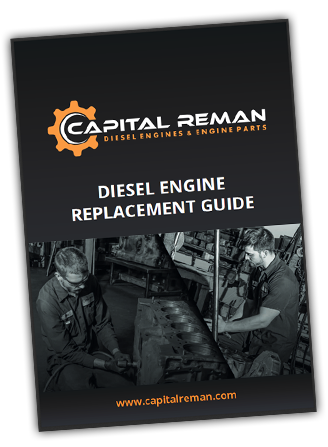The War Between Caterpillar Inc. And Its Dealers
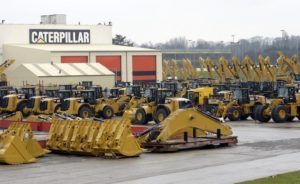 When you think of Caterpillar what comes to mind most? Dozers, Excavators, Skid Loaders? Maybe the iconic “CAT Yellow”? If those aren’t on the top of your list the fine network of Caterpillar Dealers has to be a close third. For years Caterpillar has maintained a long standing tradition of publicly loving and standing behind all 178 of its dealers.
When you think of Caterpillar what comes to mind most? Dozers, Excavators, Skid Loaders? Maybe the iconic “CAT Yellow”? If those aren’t on the top of your list the fine network of Caterpillar Dealers has to be a close third. For years Caterpillar has maintained a long standing tradition of publicly loving and standing behind all 178 of its dealers.
Recently, this corporate/dealer love fest has cooled a bit with the corporate office asking “What are doing for us lately?”
Caterpillar Inc. is the largest manufacturer of construction and mining equipment in the world and until recently held the title of most over the road truck engines on the road. In 2010 Caterpillar left the over the road truck engine market due to four factors: They were having large warranty claims on ACERT Engines, they were losing market share to Cummins, a combination of the two previous accounts made the truck engine division unprofitable and lastly they couldn’t meet the EPA emissions standards of 2010 with the ACERT technology. Many old school CAT customers are simply opting for older pre-emissions remanufactured Caterpillar engines and equipment.
Cat believes its dealers are missing out between $9 billion - $18 billion of ‘low hanging fruit’ revenue. The corporate office has identified three key components the dealers are not utilizing in day to day operations:
1. Dealers are not using the wealth of real-time customer data now available at their fingertips2. The dealers are not communicating or collaborating with other dealerships3. Dealers are not providing a consistence customer experience when it comes to e-commerce orders, parts and servicing pricing
The disconnect between corporate and the dealer really steams from a way of thinking. The corporate mentality is one of technology integration, analytics and finding revenue opportunities. Whereas, the dealer mentality is “if it ain’t broke don’t fix it”. Some dealers have been around 80+ years and essentially stuck in their ways. Selling parts and equipment is done on a territorial basis with the majority of sales coming from walk-in traffic.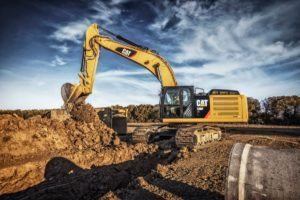 Caterpillar is demanding change and giving its dealers until the end of the year to develop a three-year plan to capture those lost sales. Dealers who fail to meet targets could have their dealership agreements terminated although top executives have left that as the last option. Chief Executive Officer, Doug Oberhelman, stated “That would be the last resort, the last outcome and certainly not desirable.”
Caterpillar is demanding change and giving its dealers until the end of the year to develop a three-year plan to capture those lost sales. Dealers who fail to meet targets could have their dealership agreements terminated although top executives have left that as the last option. Chief Executive Officer, Doug Oberhelman, stated “That would be the last resort, the last outcome and certainly not desirable.”
Caterpillar, like its rivals, has assimilated all sorts of diagnostic technology into its machines that deliver real-time information about the health of its products. The data helps customers manage fuel and maintenance costs, track the equipment in real time and optimize the utilization of said equipment in the field.
The technology can be better exploited by dealers. The diagnostic information could immediately increase part and service sales to existing customers. Dealers could anticipate problems before they arise. Cat corporate is insisting dealers are not doing enough to schedule preventative and predictive maintenance. Overall the company feels it dealer network needs to do a better job of helping customers manage their equipment fleets more effectively.
Stu Levenick, the group president in charge of dealer relations stated that a few dealers do a pretty decent job at understanding the parts demand by their customers with about 90% knowledge of the parts sold however the average dealer only has about a 40% retention of the parts opportunity presented in the market place. Caterpillar has discovered that applying the practices of the best performing dealers with the lower performing dealers automatically improved 6% to 8% in aftermarket share improvement. These changes are fairly obvious but the dealers have not done them as nobody directed them to do it or helped them learn the processes.
Passing Up Billions In Sales
This is the age of information. Technology and data analysis are changing the way businesses are looking at their operations. In the case of Caterpillar, a company that has been around for 91 years, charging ahead into the 21st century is more of a challenge than first thought. There are more than 3.5 million pieces of Caterpillar equipment in the field. Many pieces of the equipment are equipped with sensors that send out continual status updates about mechanical systems and operator performance.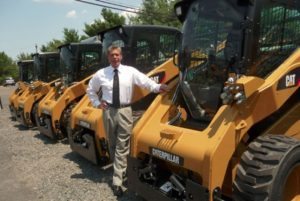 The disconnect between corporate and dealers is the old school mentality. A dealer that might have been in business for 50 years doesn’t want to do change anything. If it worked in the past it will work in the future. The dealers don’t want to updat technology or adapt to the tidal wave of technology in heavy equipment. Caterpillar believes they could be selling billions and billions of more parts and service each year if they could get their dealers to look at their machines as digital devices, constantly pinging them with sales and service opportunities – not just big pieces of steel and iron.
The disconnect between corporate and dealers is the old school mentality. A dealer that might have been in business for 50 years doesn’t want to do change anything. If it worked in the past it will work in the future. The dealers don’t want to updat technology or adapt to the tidal wave of technology in heavy equipment. Caterpillar believes they could be selling billions and billions of more parts and service each year if they could get their dealers to look at their machines as digital devices, constantly pinging them with sales and service opportunities – not just big pieces of steel and iron.
Caterpillar’s big plan to get dealers up to speed was unveiled recently in Las Vegas; code name Across the Table. The plan was unleashed to distributors via a private meeting and made public soon after.
Caterpillar states that one of the biggest issues with their dealer network is that each one (which is independently owned and operated) is not necessarily in contact with other dealers. CAT insists that dealers are not offering consistent e-commerce solutions to customers who, in many, cases work with more than one Caterpillar dealer across the globe. Customer accounts and similar service/pricing are inconsistent from dealer to dealer. Levenick goes on to state that, “Customer expectations have changed over the years. If they work with multiple dealers, they want to have a common customer experience wherever they go across the globe. One CAT, One Experience.” Currently each dealer shares a disjointed experience when it comes to locating parts and serving accounts. Caterpillar cited the example of the Australian market where four dealers have carved up the whole country. Caterpillar Corporate themselves also have a few small depots that also sell a few specialty parts directly to the public. The issue is there are dozens of supply warehouses whose inventory and order systems aren’t linked together.
Levenick goes on to state that, “Customer expectations have changed over the years. If they work with multiple dealers, they want to have a common customer experience wherever they go across the globe. One CAT, One Experience.” Currently each dealer shares a disjointed experience when it comes to locating parts and serving accounts. Caterpillar cited the example of the Australian market where four dealers have carved up the whole country. Caterpillar Corporate themselves also have a few small depots that also sell a few specialty parts directly to the public. The issue is there are dozens of supply warehouses whose inventory and order systems aren’t linked together.
Chief Executive Officer, Doug Oberhelman, cited an example of what is going on in Australia. “I don’t even know how many individual parts warehouses there must be between the four dealers in Australia but it is probably over 100. And those dealers don’t talk to each other. A customer may need a part in Perth. The warehouse in Melbourne may have it, but won’t communicate with all other places in Australia before we go overseas to get it.” That is lost revenue in shipping and a poor user experience for the customer.
Increase in Heavy Equipment Rentals
The corporate mentality is also challenging dealers to do a better job at foreseeing the changes taking place in the heavy duty construction market where sales of equipment to rental companies now pace new sales to contractors. Customers are seeing rental equipment a cheaper alternative to purchasing capital heavy machinery. The dealer network, which was set up in the 1920s, was never intended to handle the financial capabilities or operational loads of running a rental organization. It is a whole different ball game in the way a rental business is structured than one off parts sales. Caterpillar is not set up the same way United Rentals is. The rental business requires a huge amount of working capital. It is a matter of cash flow which would be diverted from other parts of a dealer’s business that might require funding for future growth. Caterpillar acknowledges the strain the rental demand is putting on its dealer network but doesn't see an immediate solution. It moves the financial cash flow from the customer, to the dealer and up to the corporate level.
The dealer network, which was set up in the 1920s, was never intended to handle the financial capabilities or operational loads of running a rental organization. It is a whole different ball game in the way a rental business is structured than one off parts sales. Caterpillar is not set up the same way United Rentals is. The rental business requires a huge amount of working capital. It is a matter of cash flow which would be diverted from other parts of a dealer’s business that might require funding for future growth. Caterpillar acknowledges the strain the rental demand is putting on its dealer network but doesn't see an immediate solution. It moves the financial cash flow from the customer, to the dealer and up to the corporate level.
Rise in New Competition: Better Quality and Price
The risk from Caterpillar is not to rock the boat too hard. Caterpillar is the Number 1 provider of construction and mining equipment in the world. Messing with the dealership foundation of what made the company successful may not be the best route for CAT. Caterpillar is built on its dealer network which employs 162,000 workers most of which are scattered outside of the United States. In recent years lower-priced Asian rivals with a less robust dealer support network have risen to power to challenge the old brood. The quality of aftermarket parts has risen dramatically in the past 10 years and are right on par with CAT OEM Parts. The major aftermarket parts are all made in ISO 9001 factories and offer better warranty and pricing that Caterpillar. A little known secret in the industry is that CAT no longer makes their own parts. Caterpillar is simply a brand. The same parts manufacturers make parts for both CAT and the aftermarket companies. It is the same exact part but one is stamped "OEM" and other is branded "Aftermarket". The consumer is paying a premium for that CAT label but may not be getting better quality for the price. The world is a global marketplace and the internet now supplies parts and equipment at a click of a mouse oftentimes making the old brick and mortar obsolete. CAT's internet presence is weak and online ordering system is clunky and confusing.
Times are tough right now for the company. Revenue peaked at $65.9 billion in 2012 but have plunged nearly 16% in 2013 as the global mining industry tanked. The great recession in the oil and gas market beginning in 2014 and still continuing into 2016 has not helped sales either. The one bring spot for the company is that in 2016 the construction industry has boomed again, new commercial and residential starts are back to pre-recession levels. The goal for the company is to reach $100 billion in annual revenue by 2020 but that might simply be a pipe dream now. In 2015 revenues were a dismal $47 billion; that is a 28.32% decrease in only 3 years. Ouch! Layoffs have begun at some of the under performing segments of the company including a Jacksonville, FL location that made work tools for CAT mining operations.
The turnaround is focused on hardline change. The company is focused on nine to ten dealer metrics in the Across the Table program, most of which it refuses to discuss with analysts. Consequently that has made it hard for investors to determine the valve of Caterpillar stock. Right now it is hard to assess CAT’s bottom line.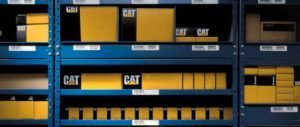 Top executives at Caterpillar have made it clear that the writing is on the wall for dealerships: Either Conform or Close. Dealers need to significantly increase the sales of their parts and service departments. One key metric that Caterpillar has shared with analysts is something it calls “the absorption rate” which measures how long a dealership could keep its doors open if it never sold another piece of equipment and only had to survive on profits only from parts and service sales in its territory.
Top executives at Caterpillar have made it clear that the writing is on the wall for dealerships: Either Conform or Close. Dealers need to significantly increase the sales of their parts and service departments. One key metric that Caterpillar has shared with analysts is something it calls “the absorption rate” which measures how long a dealership could keep its doors open if it never sold another piece of equipment and only had to survive on profits only from parts and service sales in its territory.
The absorption rate formula is quite simple. If the CAT dealer’s gross profit from parts and service can cover its total overhead and interest expenses per year the dealer is said to have a 100 percent absorption rate. For many years Caterpillar Corporate was fine with a 100% absorption rate metric, now that number is not enough.
Dealer absorption rate goals will be different moving forward. More than 100% will be expected from each dealer moving forward and those goals must be met by 2018. Even the best dealers in the dealership network will have new goals that they need to comply with.
Technology Integration For The Sake Of Profit
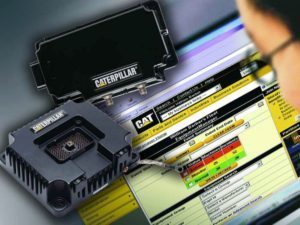 Integrating technology is the primary way Caterpillar is banking on revenue production moving forward but not the only way. Caterpillar has been installing sensors, engine control units, cameras, satellite-based positing control and guidance systems on its machines to help increase productivity and efficiency as well as reduce on-site work related incidents.
Integrating technology is the primary way Caterpillar is banking on revenue production moving forward but not the only way. Caterpillar has been installing sensors, engine control units, cameras, satellite-based positing control and guidance systems on its machines to help increase productivity and efficiency as well as reduce on-site work related incidents.
Long time CAT customers have said the company has other motives. All of those electronic gadgets and monitoring systems carry a double edge sword. Consumers, for the most part, hate them. All of the “bells and whistles” on the machines are ancillary and are not necessary to get the job done in the field. Customers hate dealing with the new technology because the simplicity of the old machinery is gone. With technology comes maintenance and damage issues. Perfect for Caterpillar that needs to service these units but terrible for the paving contractor who is down and needs to get back to work. All of the diagnostics equipment (CAT SIS) needed to service CAT equipment is all proprietary meaning you have to go to the dealer. CAT sees the Equipment Management Systems (EMS) as a much more lucrative future than simply selling machinery. Simply put CAT wants to be in the fleet management business.
On the flip side of the coin Caterpillar is at a crossroads in terms of what made them popular in the first place. It used to be Caterpillar meant quality and American craftsmanship. In recent years we have seen many complaints about the quality and performance of their engines. Common issues are that they are underpowered and 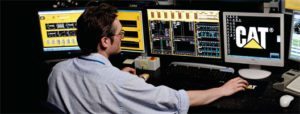 have a whole host of issues regarding the emission control engineering. Quality, Service and Warranty issues are at an all time low point for the company. It is easy to see why customers are going elsewhere like rival Cummins or simply renting equipment they know isn’t going to last. Selling a $650,000 machine that doesn’t include a radio or air condition isn’t going to cut it in the longhaul. People will go elsewhere and have.
have a whole host of issues regarding the emission control engineering. Quality, Service and Warranty issues are at an all time low point for the company. It is easy to see why customers are going elsewhere like rival Cummins or simply renting equipment they know isn’t going to last. Selling a $650,000 machine that doesn’t include a radio or air condition isn’t going to cut it in the longhaul. People will go elsewhere and have.
Only time will tell what the future may hold for Caterpillar but so far the results have been positive for the most part… even if there is some grumbling the dealers. Those who do not grow will die. Hopefully we see a bright sunshiny "CAT Yellow" day for Caterpillar once again.



